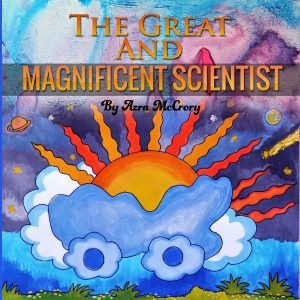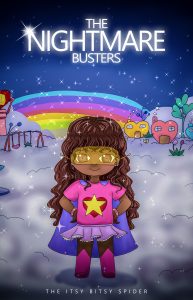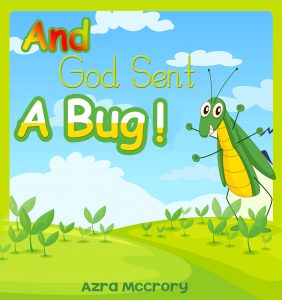MULTIPLE INTELLIGENCE’S
`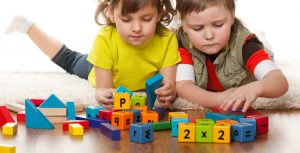
Learning Styles for Learning People
“It’s not how smart you are, it’s how you are smart.”
-HOWARD GARDNER
In my recent article, Wholistic Childcare (aka Wholistic Approach) we discussed what concepts and ideaologies define my Wholistic Childcare model. This article is here to define the branches of our Wholistic tree starting with Multiple Intelligence’s and Domains of Development. Let’s jump in shall we!
Multiple Intelligence’s are the ways people learn, or styles of learning. Originally Howard Gardner (1943-) developed his theory of Multiple Intelligences to define the variety of ways that we all naturally learn. What came from that was an identification of what learning styles were prominent in the individual. Over the years Multiple Intelligences has gotten a bit of a facelift so as to include other learning styles.
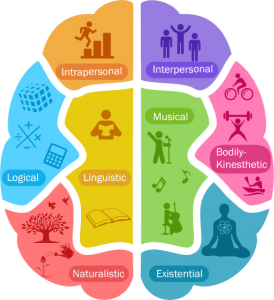
The Multiple Intelligence’s/Learning Styles are as follows: (Connections Academy, 2014)
- Visual-Spatial – (Picture Smart) people typically learn well through drawing and or visualizing things using what we would call their minds eye. People who are visual learn best from visual aids including things like pictures and diagrams.
- Verbal/Linguistic – (Word-Smart) people who learn best through speaking, listening, reading and writing. Verbal students absorb information through engagement with the reading materials and also by debating or discussing their ideas.
- Logical-Mathematical – (Logic Smart) people that display this particular style of intelligence learn through classification, relationships, numbers, abstract thinking, and categorizing.
- Bodily-Kinesthetic – (Body Smart) are the type of individuals learn best through movement and touch. They also are good at processing information through the body. Kinesthetic learning styles tend to operate best when they are moving or in motion instead of just sitting still, and even standing up works well for them.
- Interpersonal – (People Smart) are those who learn well through relating to others by comparing, cooperation, and sharing. These are the type of people who make excellent team players as well as leaders.
- Intrapersonal – (Self Smart) People with this style of learning intelligence do well working alone as well as setting personal goals. While these type of learners are not necessarily shy people; they are however independent and organized.
- Auditory-Musical – (Music Smart) are the type of learners who learn using melodies or rhythm, especially with regard to singing and or listening to music.
- Naturalistic – (Nature Smart) are naturalistic learners who do well when working with nature. These type of learners/students enjoy gleaming from the fields of the natural world where they get educated about living things/organisms or natural events. Naturalistic learners are prone to excel in the sciences and exhibit strong passions toward issues regarding environment.
- Emotional Intelligence – (Feelings Smart) the capacity to be aware of, control, and express one’s emotions, and the handle interpersonal relationships judiciously and empathetically. According to Psychology Today (2016), emotional intelligence is emotional awareness, or the ability to identify and also manage your emotions as well as the emotions of others. It is also having the ability to harness emotions and apply them to problem solving and other cognitive tasks.
While I do not include all of the intelligence’s defined by Gardner and others, I will list them here as additions. The updated addition to the theory of Multiple Intelligence’s and Learning Styles brought in some very applicable ways that people also learn. The additions are Existential or Spiritual Intelligence as well as Moral Intelligence with may be one and the same. Due to my own personal understanding of how I learn, I would venture to say that these learning styles are fitting for many, but they may serve more to highlight how the 5 dimensions of being & development are defined more than they are necessary for inclusion into the learning styles, however, they appear to also be one in the same with the 5 dimensions.
- Existential (Spiritual) Intelligence, although not officially included by Howard Gardner, is defined as an intelligence as one’s ability to use collective values and intuition to understand others and the world around them. This learning style consists of people who excel by seeing the big picture.
- Morals and Values which are also considered Learning Styles. – These are some of the most valuable elements of a person’s character, and as caretakers, it is important to help children establish and develop the internal compass that is there to give them guidance and help them understand what they should and shouldn’t do. Teaching morals and values is about teaching kids to love themselves, respect themselves, and to also extend that love and respect to others. Children who learn this in the early stages of development learn value. Kids need to know right from wrong, just like we do, and this type of behavior is taught in the home from parents first, because we know that parents are in fact the first teachers.
Once we understand the presence of Multiple Intelligence’s both in ourselves and in the children we teach, we need some ideas on how to apply it. While there is still room for our traditional logical/mathematical and linguistic intelligence activities, that are often seen permeating the classrooms, we must make room for concepts, education, and activities that serve all multiple intelligences, especially if we want to better meet them in their development and fortify a better future in education and learning for our children.
Activities for Various Intelligence’s/Learning Styles:
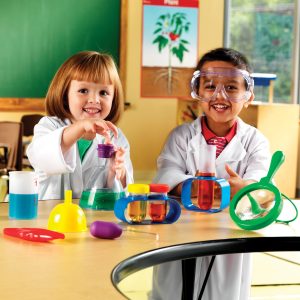
Image Location: https://www.google.com/search?q=kids+learning&source=lnms&tbm=isch&sa=X&ved=0ahUKEwjx8p3P9d7TAhUMyoMKHeMyDCUQ_AUICigB&biw=1895&bih=947#imgdii=VXlaibRct0YN6M:&imgrc=kw_DLiREpZnQ_M:
Bodily-Kinesthetic – These students enjoy physical stimulation, because they like to move. Allowing children to perform a dance or even act out a skit/drama will enhance learning. Another way to increase learning and development is to allow for activities that “physically simulate the scientific process” (Haynes, n.d.). Children with this learning style will also benefit from building or making use of manipulatives in math. Have them build a clay model or even create a collage that references an important concept.
Linguistic – Students with this learning strength would benefit from writing a story describing what they are learning or studying; laying out their notes or information in a story form. You can get creative here by finding ways to create videos, design a brochure or flyer, write a script, or even creating a type of manual to express a process that they may be learning.
Interpersonal – This type of learning style is associated with the chatter box type. What does that mean? Well, they LOVE to talk! This chatty energy can be channeled in positive ways with participation in group work and opportunity for class discussions. Other ways to help learners who like to talk is to allow them to teach something in the class, I know this can sound like a stretch, but there are simple ways to do this, and also create boundaries so that it can be fun, engaging, and effective, without being overwhelming and difficult for teachers. It is of great benefit to take advantage of technology as well, and in doing this with Interpersonal learners you can allow them to interact through chat, Skype, and other interactive communicating forms.
Intrapersonal – people with this intelligence style of learning do well to make connections between what they are learning and a personal experience, therefore, activities and assignments that foster that will be impactful in their development and understanding of material.
Visual/Spatial – because these learners are picture smart, illustrative means will serve well. These students could illustrate a group project, develop PowerPoint presentations and create story boards, or even draw diagrams. Using things like colors and symbols may be helpful for them to make sense of learning materials, and it may also be an alternative to traditional note-taking. Some suggest graphic organizers to be helpful.
Naturalistic – learners get a lot out of incorporating the natural world into their learning experiences, so start by bringing the outside the world into their world, and you will surely have their attention. These students would enjoy taking care of a garden whether it be outside or something inside. Allow them to water plants, examine them, ask questions, and discuss their observations. Be sure to take advantage of nice weather so these students can absorb the most from being in nature. Take field trips and find ways to allow them to interact with animals, rocks, flowers, and plants. Rocks can even be used in math manipulative activities. It may even be wise to let them write or draw about nature in order to express the naturalistic side.
Musical – students may one day be gifted musicians, so how can we help cultivate this intelligence in the everyday classroom. Because these learners highly enjoy music and have an ear when it comes to sensing patterns and rhythms, which are melodic patterns; we can allow them to create music about the subject they are learning. For example, allowing children to create a rap song that will help them to make the connections between the information being shared and sounds/music.
Rhyming books also have rhythm and are a great way to snag most children’s attention. These type of books show a pattern and develop a rhythm for these musical learners. In Teach Hub (Haynes, n.d.) one suggestion was made to allow children to use music to represent elements. The example is to choose 3 different styles/forms/pieces of music, but ones that represent a solid, gas, or liquid element. Then allow the children to listen to the sounds and group them into the category that they feel is more related. So, which sound do you hear that sounds like liquid, etc. To take the learning into another direction of development, have the children elaborate on or discuss why they believe that music represents that element, or why those chose that one. This is a great time to observe and analyze what development is taking place and even where development is. Furthermore, this type of creativity will not only appeal to the children’s interest, but provide the teacher the opportunity to determine comprehension levels, and gauge how to better develop the child in any particular area where needed. Of course children who like music may benefit from listening to auditory products.
Logical-Mathematical – intelligence styles will be engaged in activities and learning that cause for problem-solving and logical reasoning. Building structures, especially with a team, can be helpful. This type of activity forces them to cognitively engage in solving structural problems, while logically decoding what makes sense to get the structure to rise, stand, and be supported. Doing this type of activity with groups can exercise a child’s problem solving and deductive reasoning all the more. Activities where the children get to perform and conduct a survey, then chart/graph the results of the survey will be of more interest too. Math problems, or activities that involve numbers will serve their peaking interest. Just the simple connect the dots worksheets, crossword puzzles, sorting, categorizing, sequencing of events, and other like logical activities will grab their attention. One other thing that I would suggest is weaving in linear and cyclical processes into their learning opportunities.
With various age groups some of these approaches can be challenging, but I believe that is where the creativity can come into play. These learning styles are not just about children, they are however about how people in general learn, and how they have stronger areas of learning and weaker ones. The Multiple Intelligences Theory helps us to see the need for variety in our classrooms, and maybe even motivate us to reach towards being more effective in working with children versus just going through the motions of what is less effective. Activities that aid in the development of these learning styles are not age discriminate. In fact many of these learning styles get catered to in everyday living when we are young. Children learn so much in their everyday environments, and these learning lessons are typically more experiential than talk and listen methods.
Learning must become active and interactive for children to become the brainiacs we know they can be. When we incorporate activities that target specific areas of development in our children we are purposely cultivating our future to be brighter. When we take the time to see all the learning opportunities that come at us when we are working with children, we can gravitate towards making learning more experiential and help children connect-the-dots when those subtle moments of development transpire right before us.
For More Information and a In-Depth Understanding of Multiple Intelligence’s, please visit https://howardgardner01.files.wordpress.com/2012/06/443-davis-christodoulou-seider-mi-article.pdf to read a “Theory of Multiple Intelligence” from experts at Harvard and Boston University. This article is research based and surrounds Howard Gardner’s Theory of Multiple Intelligence’s.
References
Psychology Today https://www.psychologytoday.com/basics/emotional-intelligence
Connections Academy http://www.connectionsacademy.com/blog/posts/2013-01-18/Understanding-Your-Student-s-Learning-Style-The-Theory-of-Multiple-Intelligences.aspx
Haynes, K. (n.d.) Teach Hub: 12 Ways to Teach Multiple Intelligences http://www.teachhub.com/12-ways-teach-using-multiple-intelligences

